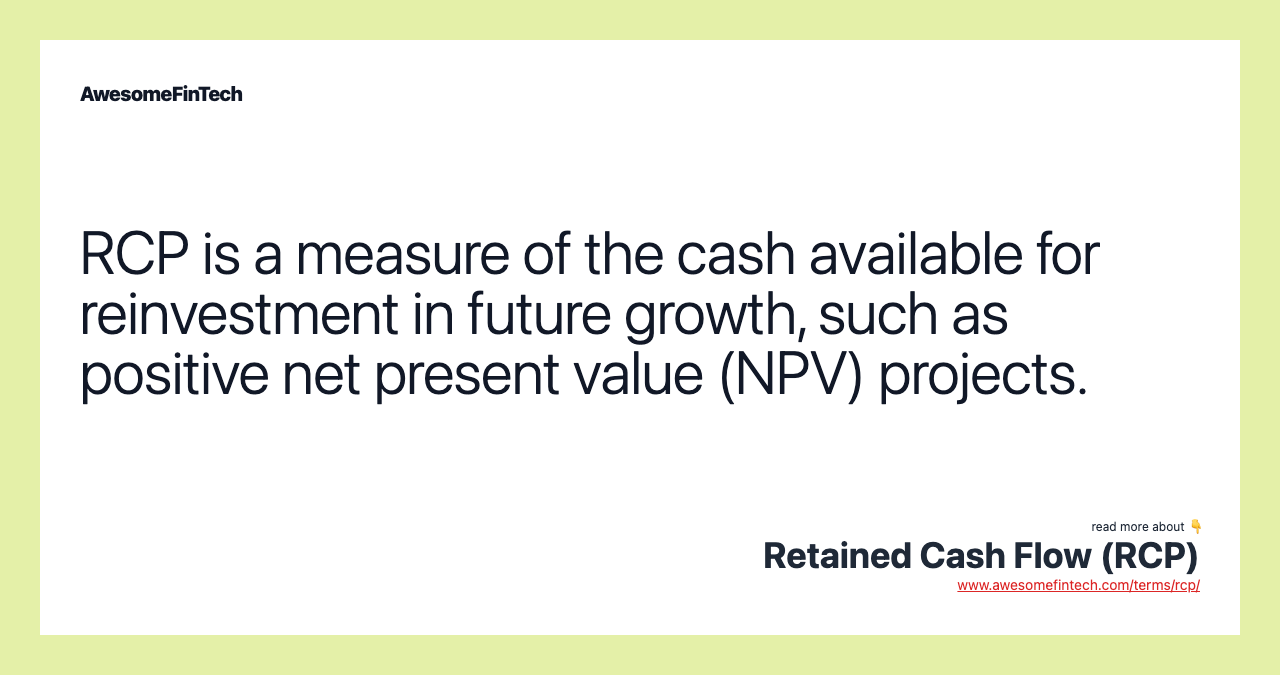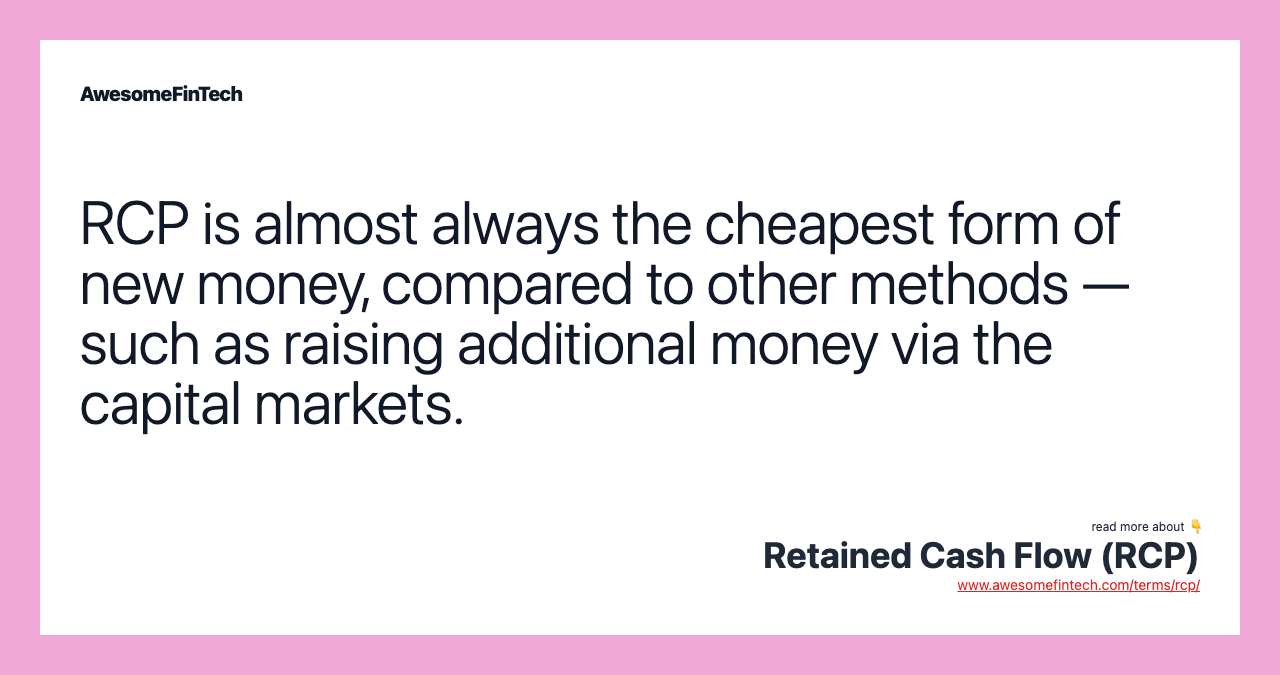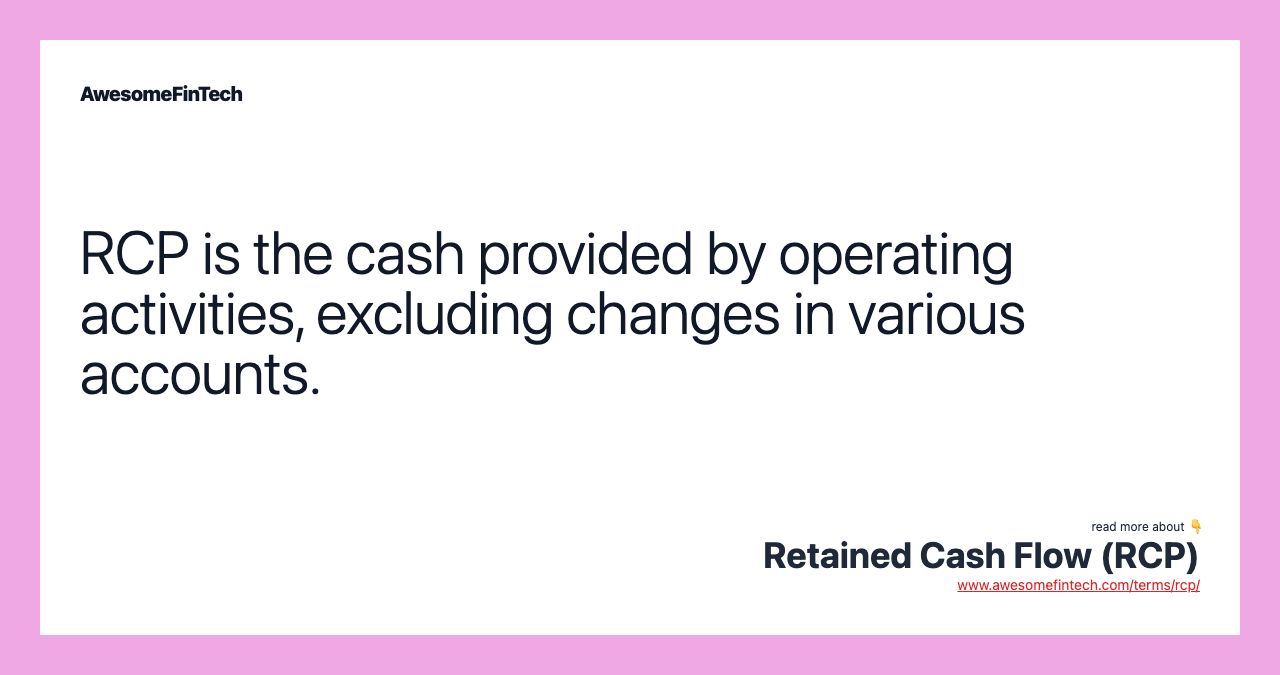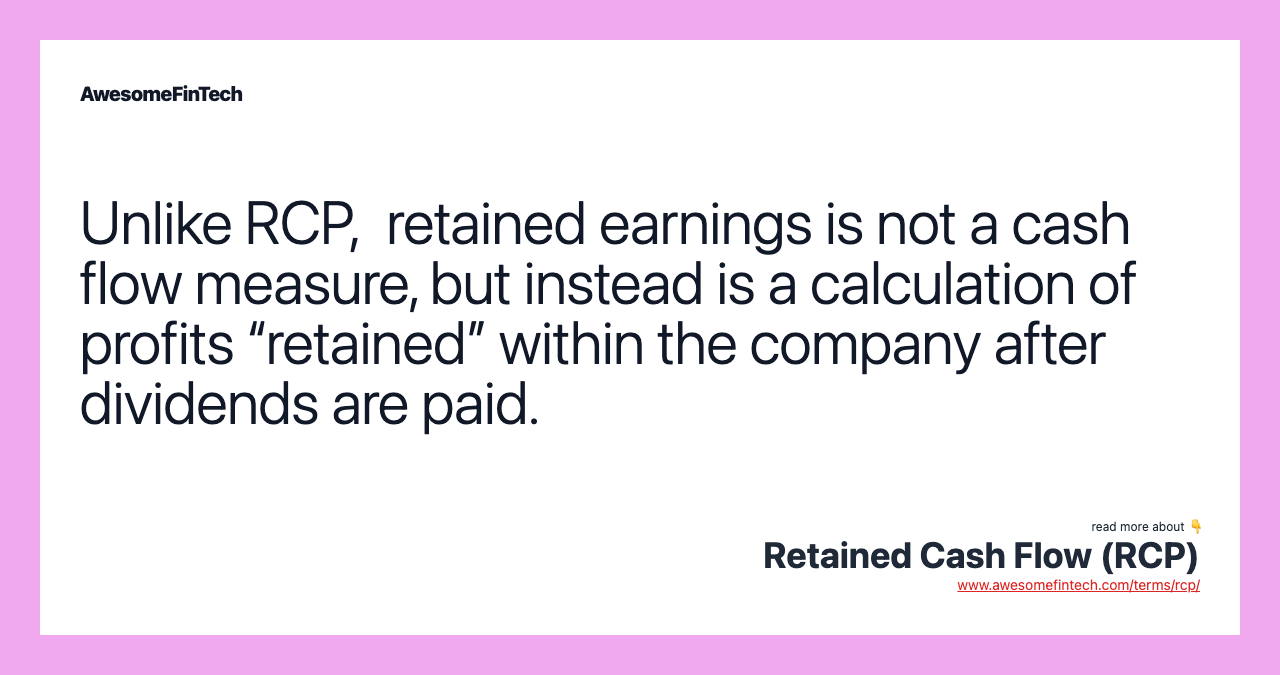Retained Cash Flow (RCP)
Retained cash flow (RCP) is a measure of the net change in cash and cash equivalent assets at the end of a financial period. Unlike RCP, retained earnings is not a cash flow measure, but instead is a calculation of profits “retained” within the company after dividends are paid. Retained cash flow is a good indication of the cash available for reinvestment in future growth and innovation efforts. Retained cash flow includes the remaining cash after an entity uses cash for expenses and returning cash to capital suppliers, such as paying off debt obligations or paying dividends. Essentially, retained cash flow is the cash provided by operating activities, excluding changes in various accounts — including accounts receivable, inventory, and accounts payable, minus cash dividends. Retained cash flow (RCP) is a measure of the net change in cash and cash equivalent assets at the end of a financial period.

What Is Retained Cash Flow (RCP)?
Retained cash flow (RCP) is a measure of the net change in cash and cash equivalent assets at the end of a financial period. It is the difference between the incoming and outgoing cash for the period. Retained cash flow includes the remaining cash after an entity uses cash for expenses and returning cash to capital suppliers, such as paying off debt obligations or paying dividends. RCP is typically used to reinvest in positive net present value (NPV) projects, thereby growing the business.





Understanding Retained Cash Flow (RCP)
Retained cash flow is a good indication of the cash available for reinvestment in future growth and innovation efforts. It is a useful metric when creating a budget, gauging financial success, and forecasting future revenues and expenses.
When a company doesn't have positive RCP and wishes to finance positive NPV projects, an entity may need to go to the capital markets to raise additional funds. This is a more costly method, as retained cash is almost always the cheapest source of new money.
Special Considerations
The cash that a company has is important. Retained cash flow is the net increase or decrease in cash a company has from one period to the next. To calculate retained cash flow you need the cash flow statement from the two most recent periods.
Essentially, retained cash flow is the cash provided by operating activities, excluding changes in various accounts — including accounts receivable, inventory, and accounts payable, minus cash dividends. RCP is generally considered the difference between the operating cash flow less dividends for two periods.
For example, say Company ABC generated $200 million in operating cash flow for the fourth quarter of 2020 and paid out $50 million in dividends. Then, in the first quarter of 2021, the company generated $125 million in operating cash flow and paid $50 million in dividends. Thus, its RCP is $75 million (($200 million - $50 million) - ($125 million - $50 million)).
Retained Cash Flow vs. Retained Earnings
Retained earnings have nothing to do with the cash the company has on hand. Instead, it’s a running total of all the company’s profits and losses since its first day in business. Profits generated but not paid out as dividends are considered retained earnings.
For example, if a company has $10 million in retained earnings, that does not equate to $10 million in cash. Say a company makes $100 million in profit and pays $75 million in dividends, its retained earnings would be $25 million. Retained earnings are past profits, which are generally reinvested back into the company.
Related terms:
Accounting
Accounting is the process of recording, summarizing, analyzing, and reporting financial transactions of a business to oversight agencies, regulators, and the IRS. read more
Accounts Receivable (AR) & Example
Accounts receivable is the balance of money due to a firm for goods or services delivered or used but not yet paid for by customers. read more
Capital Markets
Capital markets are venues where savings and investments are channeled between suppliers and those in need of capital. read more
Cash Flow
Cash flow is the net amount of cash and cash equivalents being transferred into and out of a business. read more
Cash Flow Statement & Examples
A cash flow statement is a financial statement that provides aggregate data regarding all cash inflows and outflows a company receives. read more
Dividend
A dividend is the distribution of some of a company's earnings to a class of its shareholders, as determined by the company's board of directors. read more
Dividend Payout Ratio
The dividend payout ratio is the measure of dividends paid out to shareholders relative to the company's net income. read more
Financial Statement Analysis & Examples
Financial statement analysis is the process of analyzing a company's financial statements for decision-making purposes. read more
Internal Rate of Return (IRR) & Formula
The internal rate of return (IRR) is a metric used in capital budgeting to estimate the return of potential investments. read more
Net Present Value (NPV)
Net Present Value (NPV) is the difference between the present value of cash inflows and the present value of cash outflows over a period of time. read more